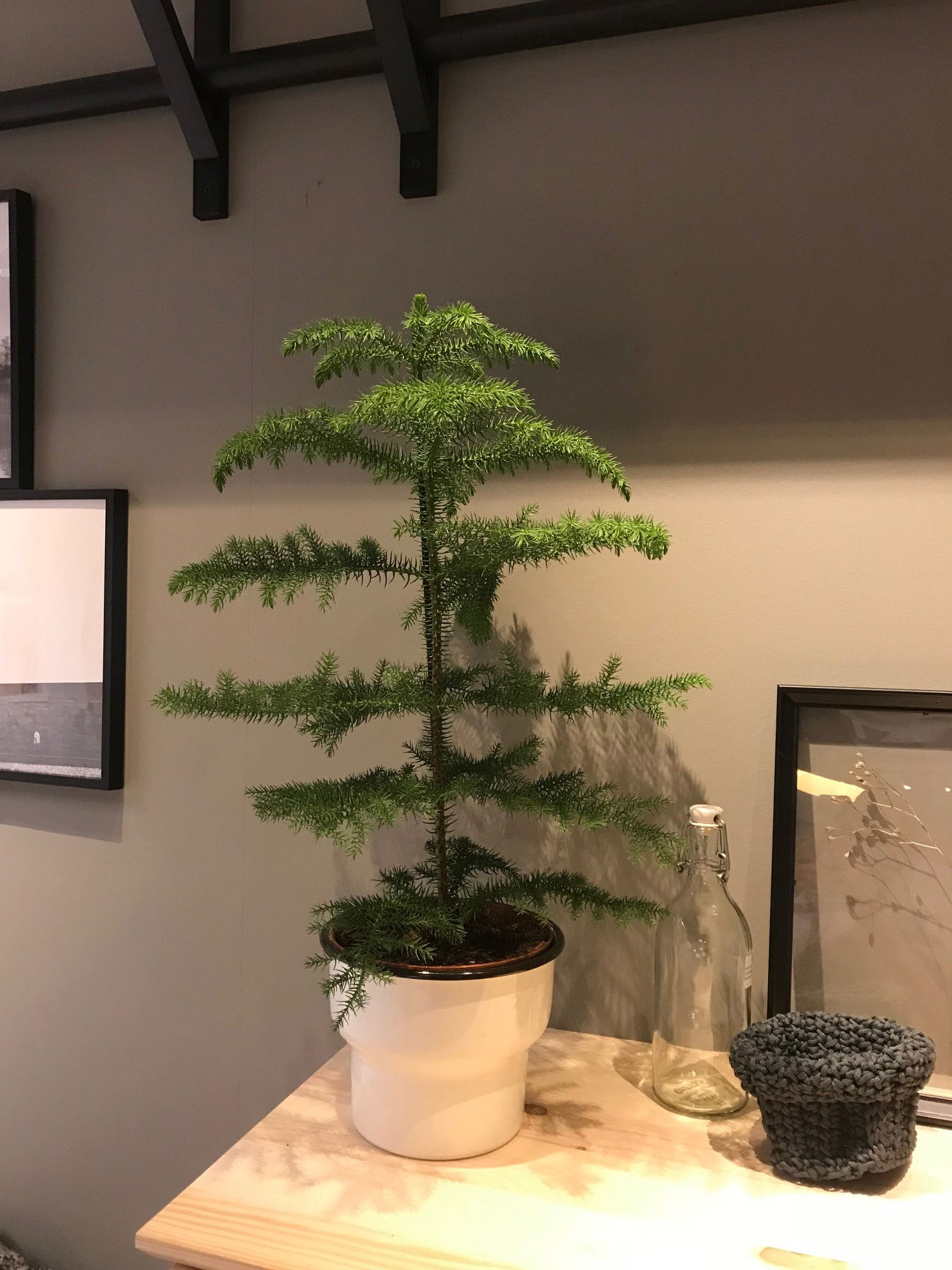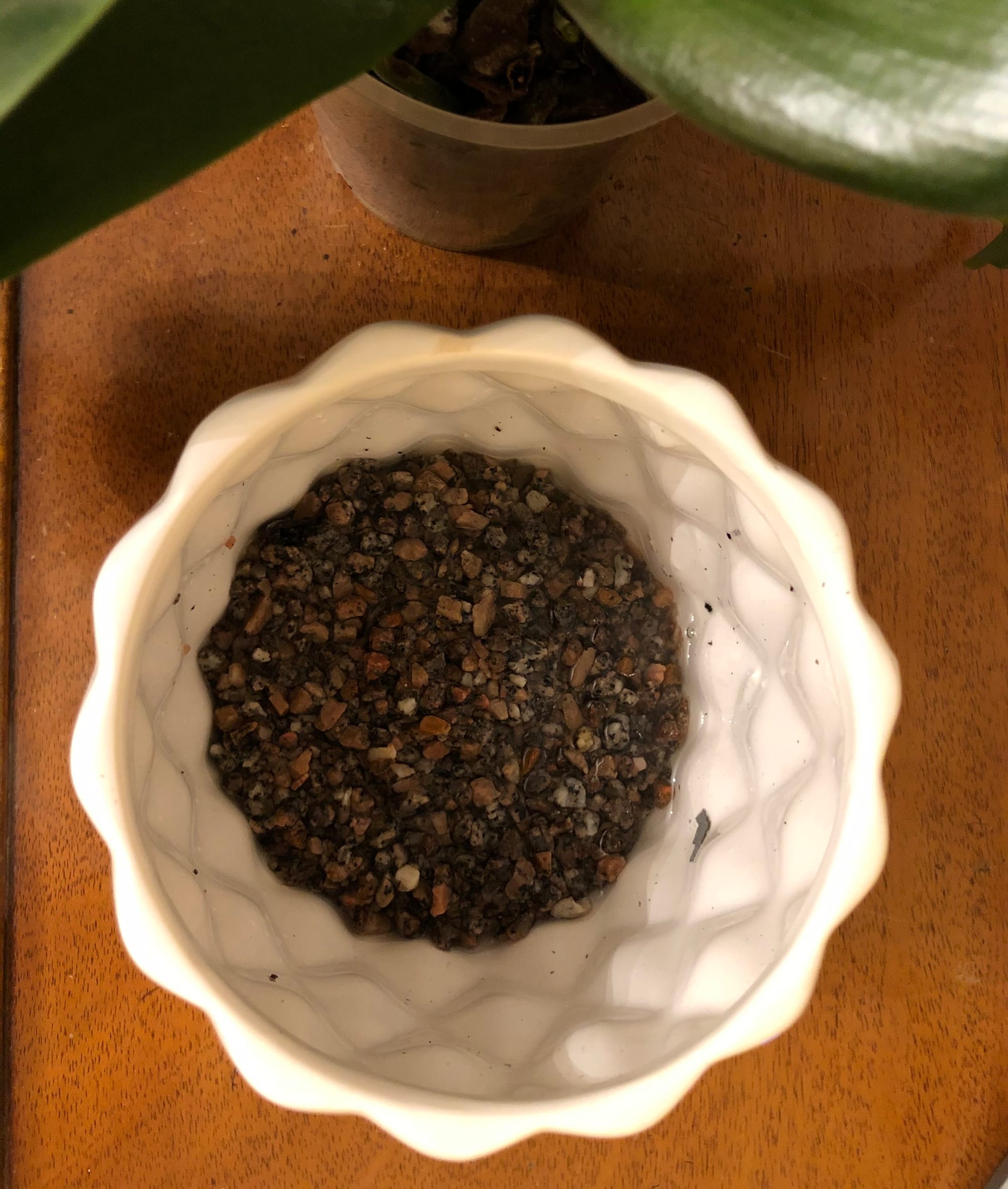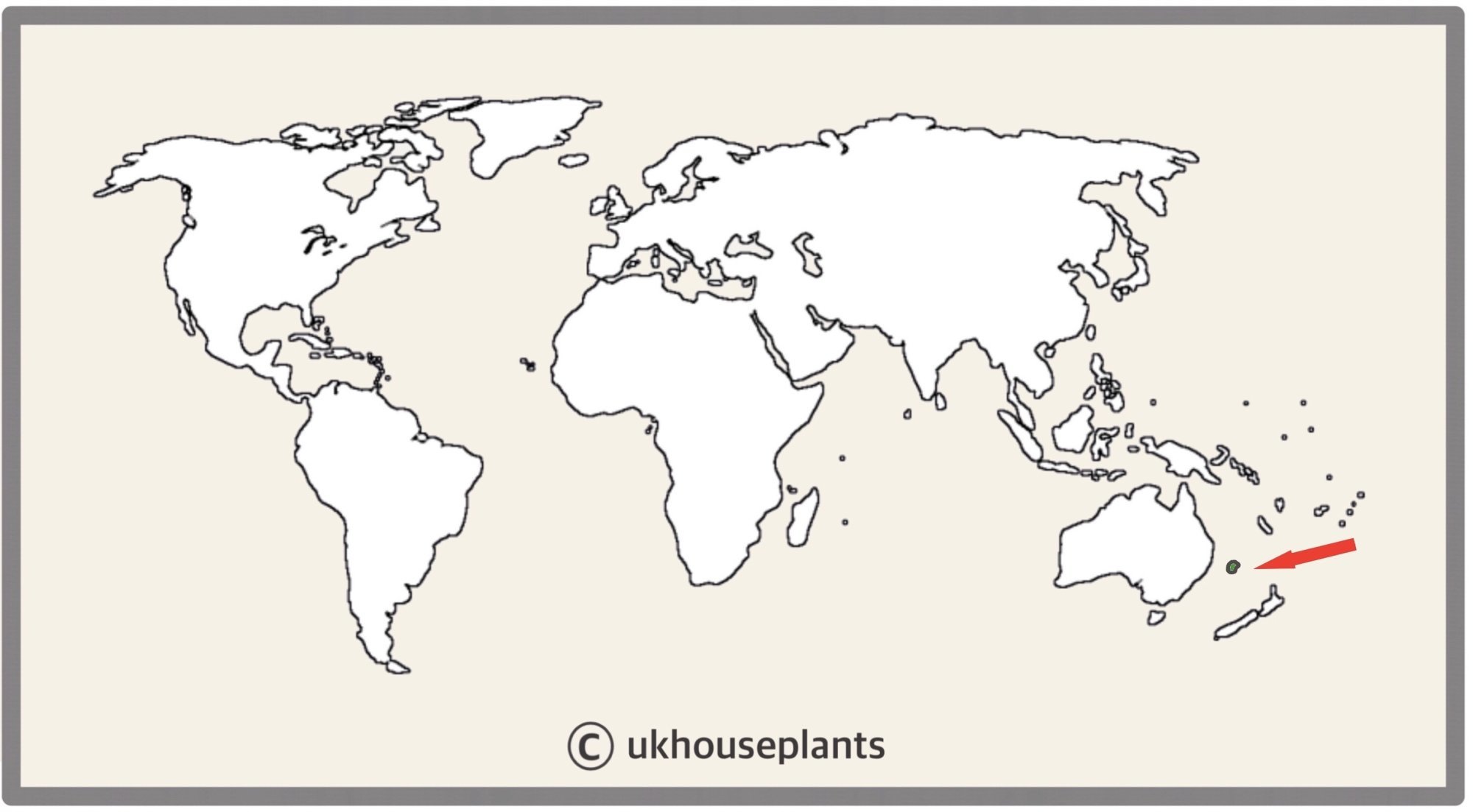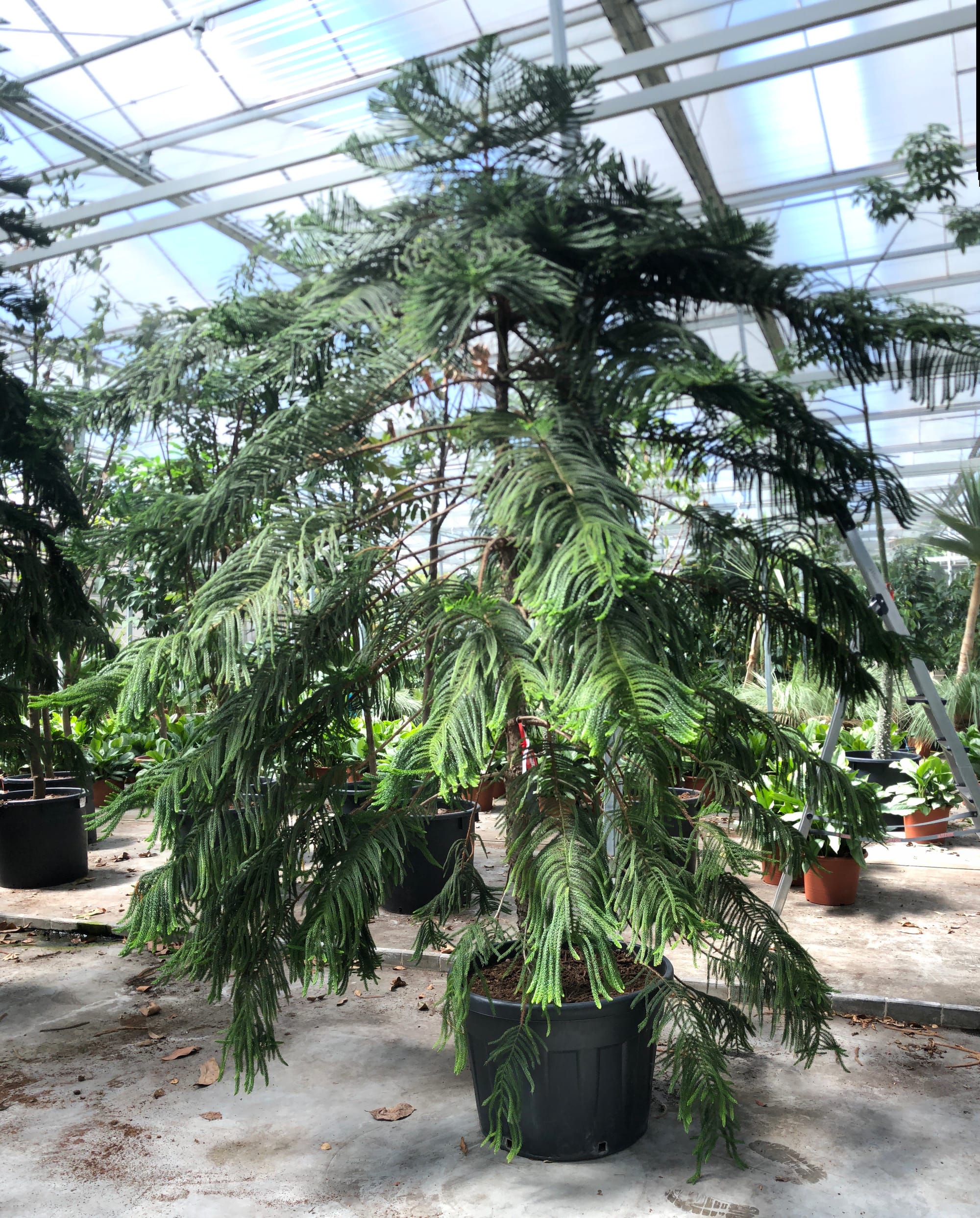
Araucaria heterophylla
Contents
- Top Tips
- Location, Water, Humidity & Fertilisation
- Common Issues
- Origins, Temperature, Propagation, Repotting & Toxicity
Need the answer to a specific plant query? Book a 1-to-1 video call with THE HOUSEPLANT DOCTOR™, the website's friendly author, to overcome and address your niggling problem! Available on iMessage, WhatsApp, Facebook Messenger & more.
Top Tips & Info
- Care Difficulty - Easy
- Allow the soil's top third to dry out in between waters, reducing this slightly further in the autumn and winter months.
- Provide a bright setting with two hours of morning/evening sunlight, avoiding deep shade if possible. Rotate the plant 180° each month to promote a symmetrical appearance.
- Norfolk Pines accept average room humidity, so artificial humidifiers aren't wholly necessary.
- Fertilise using a 'Houseplant' labelled feed every four waters in the spring and summer, reducing this to every six in the colder months.
- Mould development on the soil's top layer is a clear sign of over-watering and too-low light.
- Transplant every two years in the next-sized pot with a 'Houseplant' potting-mix, along with extra grit to the pot's lower half and compost to strengthen the root ball.
Location & Light - 🔸🔸🔸
A location with around two hours of morning or evening sun is the ideal setting for this species. Although direct sunlight is quite beneficial for this Pine, over-exposure will result in sun-scorch that'll considerably weaken the plant over time. Avoid situating one in an overly shady location that's several metres from a window, and for those who are worried about its location being too dark, if a newspaper can be read while having your back towards the light source, you're good to go!
A room that offers a few hours of either morning or evening sun is vital for good, quality growth; examples of this are near to a south-facing window, or in a conservatory. Avoid locating your Norfolk Pine more than four metres away from a north-facing window to downplay the risk of over-watering.
Water - 🔸🔸
Allowing the soil's top third to dry out in between waters is vital to avoid falling in the trap of under-watering. Once the pot feels light when lifted, compared to when you last watered it, this is the best time to irrigate. Under-watering symptoms include curling or crispy spines, wilted foliage, yellow or brown lower spines and stunted growth. Only allow the majority of the soil to become dry when the plant is serving its dormancy period, and never in full growth. Over-watering symptoms include yellowing or browning spines, stunted growth and wilting. If this has happened to your specimen, increase the intensity light somewhat with fewer irrigations; if stem's base has fully softened over, this will spell the end of its life. Over-watering is commonly caused by too little light or heat, or a lack of dry soil in between irrigations.
Humidity - 🔸🔸
An average level of humidity is more than enough to occupy a Norfolk Pine, as over-humidification and poor air circulation may result in soil mould. If it's located within three metres of an operating radiator, mist the foliage weekly or introduce a pebble tray to keep life manageable.
Fertilisation - 🔸
Fertilise your Pine every four waters in the spring and summer, reducing this to every six for the colder months of the year. The best feeds are those that favour nitrogen & phosphorus over potassium - BabyBio or Miracle-Gro's 'Houseplant' labelled fertilisers is ideal, but a seaweed-based product can also do well. Try not to over-feed your Pine the soil due to the species' sensitive nature to the sharp chemicals.
 If you're forgetfulness with watering or battling with dry air, why not fill the decorative pot's bottom sixth with small grit? This will promote more reliable soil moisture that'll help encourage better growth & all-round health as the excess moisture will drain from the plant's plastic pot, thus creating a humid environment for root interaction.
If you're forgetfulness with watering or battling with dry air, why not fill the decorative pot's bottom sixth with small grit? This will promote more reliable soil moisture that'll help encourage better growth & all-round health as the excess moisture will drain from the plant's plastic pot, thus creating a humid environment for root interaction.
Common Issues with Norfolk Pines
Over-watering is the biggest issue with Norfolk Pines. Although moist soil is vital to maintain good health, overly saturated soil will increase the chance of root rot. Allow the top third of the soil to become dry in between irrigations and try to use lukewarm water to avert shocking the tender root systems. Typical signs of over-watering include yellow or brown lower spines, stunted growth and a softened stem. During the colder months, reduce the frequency of waters considerably until the following spring to replicate its dormancy.
Too little light should be avoided as Norfolk Pines are exposed to partial sunlight in their natural environment. The ideal location in the home would be within 2m (6ft) of a window or in a semi-shaded conservatory; however, never situate it in more than a few hours of direct sunlight as it'll lead to sun-scorch. We recommend considering a north, east or west facing window.
Lower needle loss or browning is typically caused by too little moisture but can be the result of other factors. Although Norfolk Pines can withstand brief periods of dryness, they cannot tolerate persistent droughts under any circumstances. As soon as the branches begin to wilt, the soil must be saturated immediately to avoid the browning of its foliage. Apart from this, over-watering may be the cause. Only allow the top third of the soil to become dry before giving it another water -never saturate the soil unnecessarily as this could lead to root rot. The final reason is because of too low humidity. Norfolk Pines need to have a moist surrounding to thrive. Placing it within three metres of an operating radiator can quickly lead to the browning of the foliage, especially when the soil is too dry. For those displaying signs of this, remove the affected areas and relocate it to a more Pine-friendly setting that consists of a splash of sun, moist air and good soil moisture.
Mould developing on the soil means two things - too little light and over-watering. Despite the harmlessness of the mould, it'll prove unsightly to most gardeners and is therefore removed once known. To remove, replace the top two inches of the soil for a fresh batch of 'Houseplant' compost. Either increase the amount of light received (no direct sunlight for the first few weeks to prevent environmental shock) or decrease the frequency of waters slightly. If the mould is accompanied by yellowing lower leaves, you may also have a case of root rot.
Origins
The Norfolk Island Pine was first described back in the 1780s by Richard Salisbury, during Captain Cook's second voyage to the pacific. It was placed initially in the Eutassa genus but was subsequently changed by João Manuel Antonio Franco in the 1950s. The eighteenth-century expedition proved successful in the world of indoor horticulture, as Kentia Palms were also first noted during this trip, signalling the start of a demand for Pacific plants. At first, there were hopes of a potential Araucaria timber industry in the islands; however, British convicts soon realised it wasn't resilient enough for the proposed idea.
 The Distribution of Araucaria heterophylla in the Norfolk Islands.
The Distribution of Araucaria heterophylla in the Norfolk Islands.
Temperature
8° - 25°C (46° - 78°F).
H1c (Hardiness Zone 11) - Can be grown outdoors between late spring and summer throughout most of the UK while nighttime temperatures are above 8℃ (46℉). If you decide to bring the plant outdoors, don't allow it to endure more than an hour of direct sunlight a day as it may result in sun-scorch. Regularly keep an eye out for pests, especially when re-introducing back indoors.
Spread
Up to 2m (6ft) in height and 1.5m (5ft) in width when grown indoors from a small plant. The ultimate height will take around 10 years to achieve, with 10-15cm of growth developed per season.
 You can now even purchase 2m (6ft) Norfolk Pines from Dutch nurseries like Fachjan!
You can now even purchase 2m (6ft) Norfolk Pines from Dutch nurseries like Fachjan!
Pruning & Maintenance
Hard pruning should be avoided at all costs due to the species' poor ability to bounce back. It also isn't advised to cut the stem back to reduce the overall height because of this issue. If the needles start to yellow or brown, cut the affected areas off with a clean pair of scissors and always perform a clean incision.
Propagation
Stem Cuttings (Difficult) - Norfolk Pines can be propagated via 12cm (4.7cm) stem cuttings in early spring. Take lateral growths that have a slightly wooded base, but still juvenile to bend. Be sure to use a clean pair of scissors or secateurs, empathising a clean cut to avoid damaging the wound. Remove the bottom half of the needles and dip the wound in rooting hormone and position them vertically half-deep in a sandy, well-draining potting mix. The ideal compost is a 'Houseplant' potting mix, but multipurpose soil with some added grit and perlite is also acceptable. Provide a warm location (20°C, 67°F) that offers bright, indirect light. It's essential to have a good level of humidity by placing the cuttings and their pots in a plastic bag to reduce the amount of water-loss via respiration in the needles. Open the bag every few days for an hour to avoid the spread of bacteria that can destroy a whole batch. Remove any dead or decaying matter and avoid water-logging or persistent droughts at all costs. Once the cuttings have 2cm (0.8 inches) roots, safely place them in 7cm (3 inches) pots that have adequate drainage; the rooting process can take around two months with new foliar buds taking even longer.
Note: Pruning the top of the stem will lose the plant's symmetrical shape.
Repotting
Repot every two years in the spring, using a 'Houseplant' labelled and the next sized pot with adequate drainage. Hydrate the plant 24hrs before tinkering with the roots to prevent the risk of transplant shock. For those that are situated in a darker location, add a thin layer of small grit in the pot's base to improve drainage and downplay over-watering. Click here for a detailed step-by-step guide on transplantation, or via this link to learn about repotting with root rot.
Book a 1-to-1 video call with THE HOUSEPLANT DOCTOR™ if you'd like a personal guide to repotting your houseplant. This will include recommending the right branded-compost and pot size, followed by a live video call whilst you transplant the specimen for step-by-step guidance and answer any further questions!
Pests & Diseases
Keep an eye out for thrips, aphids, mealybugs, root mealybugs and scale. Common diseases with Norfolk Pines are root rot, leaf-spot disease, botrytis (grey mould) and powdery mildew. Most diseases are caused by excess moisture in the soil or on the foliage; maintain dry needles and always avoid water-logging for best results. Click here to learn more about these issues.
Toxicity
This plant is classified as mildly toxic. If parts of the plants are eaten, vomiting, nausea and a loss of appetite could occur. Consumption of large quantities must be dealt with quickly; acquire medical assistance for further information.
Retail Locations
IKEA, Dobbies & Online Stores.
Book a 1-to-1 Call with THE HOUSEPLANT DOCTOR™
If you need further advice with your houseplants, book an advice call with ukhouseplants' friendly and expert writer today! This can be done via a video or audio call on most apps, including Facebook, FaceTime & Skype. A ten-minute call costs £5.99 (US$7), or £15.99 for thirty minutes. You can ask multiple questions, including queries on plants, pests, terrariums, repotting advice and anything in between. Please consider supporting this service to keep ukhouseplants thriving!